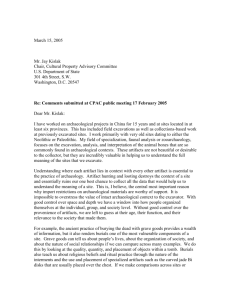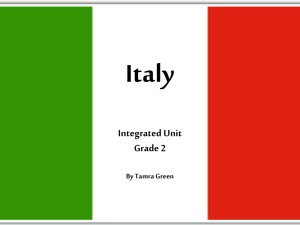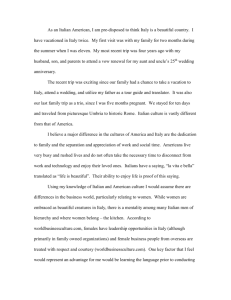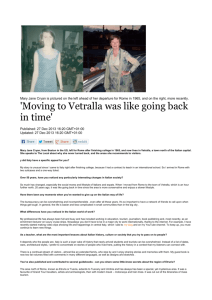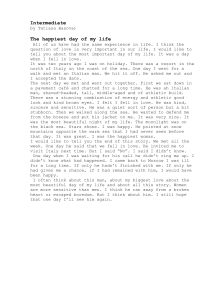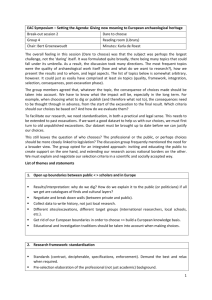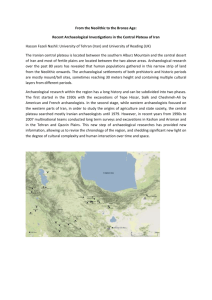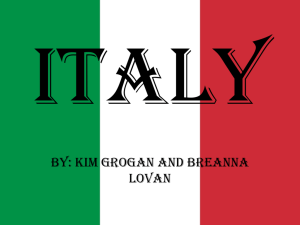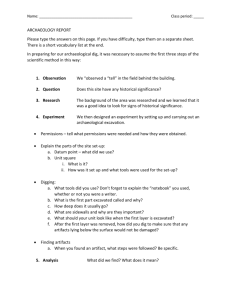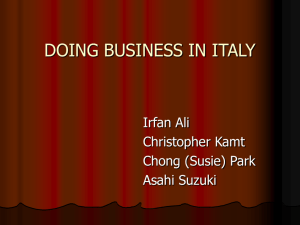Marsha Fulton - Saving Antiquities for Everyone
advertisement
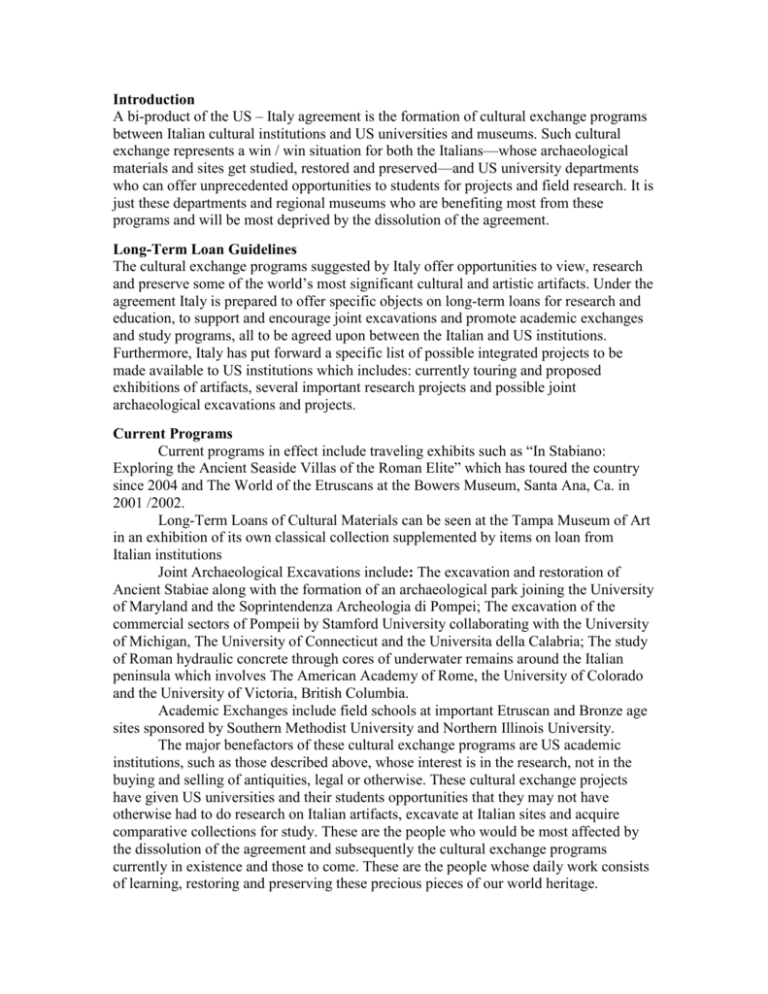
Introduction A bi-product of the US – Italy agreement is the formation of cultural exchange programs between Italian cultural institutions and US universities and museums. Such cultural exchange represents a win / win situation for both the Italians—whose archaeological materials and sites get studied, restored and preserved—and US university departments who can offer unprecedented opportunities to students for projects and field research. It is just these departments and regional museums who are benefiting most from these programs and will be most deprived by the dissolution of the agreement. Long-Term Loan Guidelines The cultural exchange programs suggested by Italy offer opportunities to view, research and preserve some of the world’s most significant cultural and artistic artifacts. Under the agreement Italy is prepared to offer specific objects on long-term loans for research and education, to support and encourage joint excavations and promote academic exchanges and study programs, all to be agreed upon between the Italian and US institutions. Furthermore, Italy has put forward a specific list of possible integrated projects to be made available to US institutions which includes: currently touring and proposed exhibitions of artifacts, several important research projects and possible joint archaeological excavations and projects. Current Programs Current programs in effect include traveling exhibits such as “In Stabiano: Exploring the Ancient Seaside Villas of the Roman Elite” which has toured the country since 2004 and The World of the Etruscans at the Bowers Museum, Santa Ana, Ca. in 2001 /2002. Long-Term Loans of Cultural Materials can be seen at the Tampa Museum of Art in an exhibition of its own classical collection supplemented by items on loan from Italian institutions Joint Archaeological Excavations include: The excavation and restoration of Ancient Stabiae along with the formation of an archaeological park joining the University of Maryland and the Soprintendenza Archeologia di Pompei; The excavation of the commercial sectors of Pompeii by Stamford University collaborating with the University of Michigan, The University of Connecticut and the Universita della Calabria; The study of Roman hydraulic concrete through cores of underwater remains around the Italian peninsula which involves The American Academy of Rome, the University of Colorado and the University of Victoria, British Columbia. Academic Exchanges include field schools at important Etruscan and Bronze age sites sponsored by Southern Methodist University and Northern Illinois University. The major benefactors of these cultural exchange programs are US academic institutions, such as those described above, whose interest is in the research, not in the buying and selling of antiquities, legal or otherwise. These cultural exchange projects have given US universities and their students opportunities that they may not have otherwise had to do research on Italian artifacts, excavate at Italian sites and acquire comparative collections for study. These are the people who would be most affected by the dissolution of the agreement and subsequently the cultural exchange programs currently in existence and those to come. These are the people whose daily work consists of learning, restoring and preserving these precious pieces of our world heritage.
